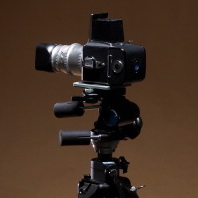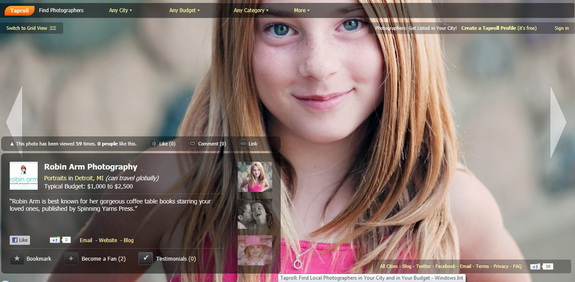 Photographers who are open to new forms of visual expression and are willing to master new technologies are likely to find plenty of new opportunities in a world in which images will be used to create more immersive, interactive and “augmented” experiences for consumers. Here are just a few of the current challenges and emerging opportunities.
Photographers who are open to new forms of visual expression and are willing to master new technologies are likely to find plenty of new opportunities in a world in which images will be used to create more immersive, interactive and “augmented” experiences for consumers. Here are just a few of the current challenges and emerging opportunities.
Challenges
Global competition. An increased supply of images from amateur, part-time, and do-it-yourself photographers (writers, designers) has pushed down prices in all fields of photography, including stock, wedding, portraits, advertising, and editorial.
Changing need for images. The transformation from print to online publishing has changed the type and volume of photographs needed for editorial, advertising, and marketing purposes. The rise of mobile marketing and digital signage is changing this mix even further.
Ubiquitous and powerful smartphone cameras. Now that so many people are carrying high-quality camera phones, news organizations can easily obtain images from on-the-scene witnesses at news events instead of sending staff photographers. Some pro and semi-pro photographers are using their iPhone camera and apps to open up new opportunities for visual expression.
No one-size-fits-all business model for professional photography. The markets and opportunities for photographers vary from city to city and region to region.
Opportunities
Visual storytelling. In general, people are becoming more dependent on visual communications. We will be getting less and less information from reading printed pages and more information from smartphones and multimedia websites and publications. In addition, everyone has a story to tell. Every corporation, organization, bridal couple, and family is looking for fresh, emotionally powerful ways to tell their stories. Talented photographers who have mastered the art of visual storytelling can use those skills to create virtual tours, photo books, and mixed-media presentations that blend stills with video.
Custom décor. Consumers have learned they don’t need to use mass-produced art to decorate their homes, offices, and businesses. Digital printing has enabled more people to buy limited-edition prints or order customized prints of places or events with special meaning to them. People can afford to buy work directly from artists and photographers.
Photo merchandise. InfoTrends predicts the market for photo merchandise will surpass $2.2 billion by 2014. As a result, many photo labs and digital-printing firms are now equipped to produce a wide range of photo-centric greeting cards, books, calendars, enlargements and photo specialty items. Most photo-merchandise items look better when the images are shot by a professional photographers.
Consulting. Now that digital cameras have replicated film-based cameras could do, researchers are developing new types of cameras with capabilities that go far beyond what was ever possible with film. But when new technologies are developed, the engineers and researchers can’t always envision the full commercial potential of their new inventions. Experienced photography pros can help researchers better understand the many different ways new imaging technologies might be used.
Education and technical support. Millions of photography enthusiasts bought DSLRs before fully understanding how to get the most from these cameras. Now, they want professional photographers who can teach them how to get more from their cameras, guide them on location shoots, and expertly print enlargements of their best images.
Online photo sales. Photographers can sell images through a growing number of stock photography agencies, or sell directly to clients their e-commerce portfolio sites.
New venues for art and photojournalism. Advances in large-format printing technologies and materials have made it feasible to enlarge high-quality, high-impact images for public-service campaigns on outdoor billboards. Some photographers have created immersive exhibitions that utilize the walls, floors, ceiling, and other surfaces of indoor or outdoor spaces.
New styles of photo-based illustration and art. Photographers can easily develop their own distinctive styles and products. The range of artistic possibilities is almost endless when you consider how many different combinations exist in terms of: creative image editing; digital, historic, and mixed-media printmaking techniques; printable materials; and new methods of displaying and selling your finished images.
Corporate content marketing. Corporate marketing departments are becoming publishers. Instead of buying advertising in editorially independent magazines, many corporations are attempting to develop magazine-quality content for their websites to help establish online exposure and credibility for their brands and promote two-way communications with customers. Opportunities may develop for photography professionals who can supply both still photographs and videos.






